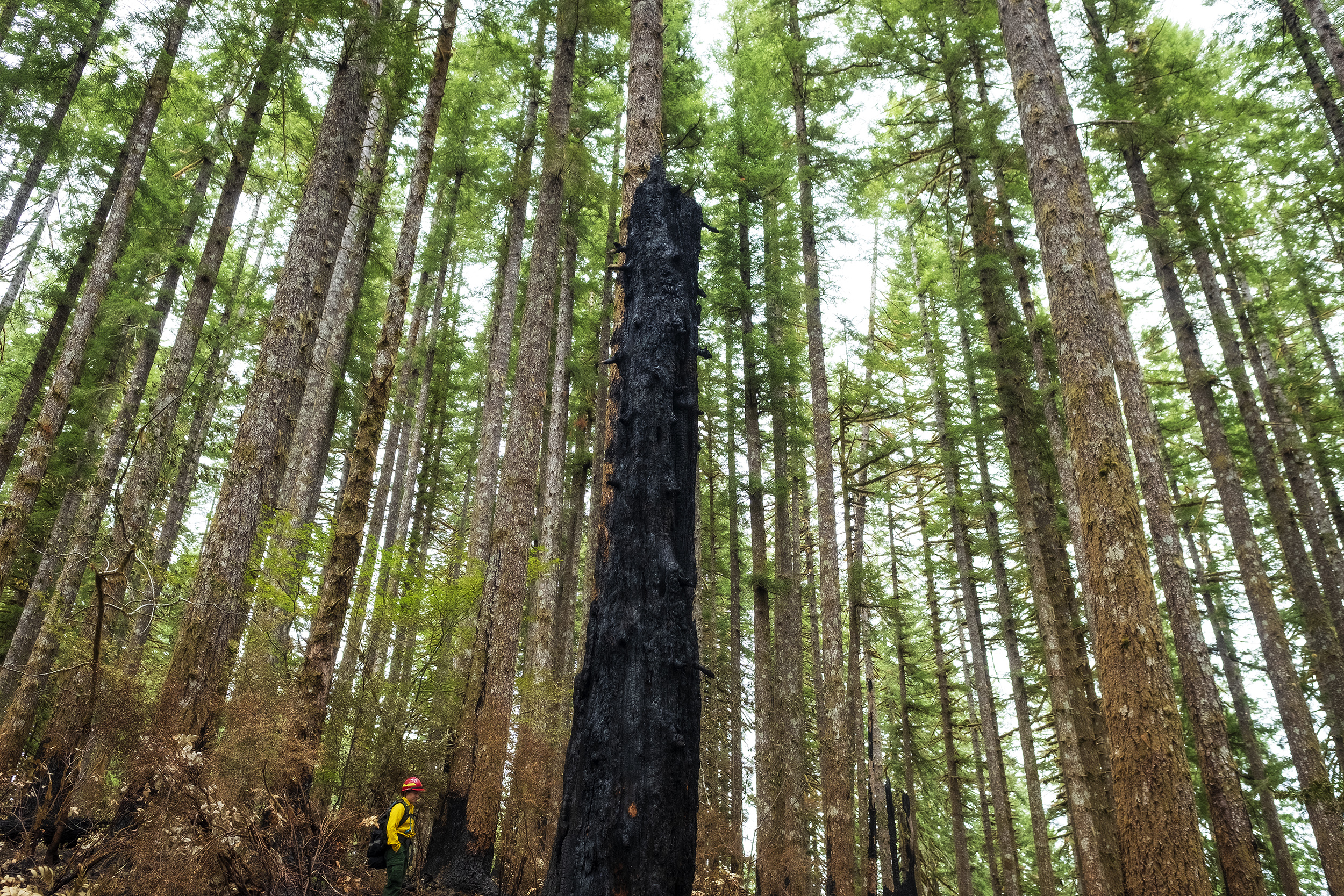
by Will Yurman
Contain, Control, Out. The mantra for those who fight wildfires.
Contain the fire, stop its forward movement.
Then control it. Eliminate or reduce any chance that the fire will spread – that a burning tree will fall or a spark will jump across a control line for example.
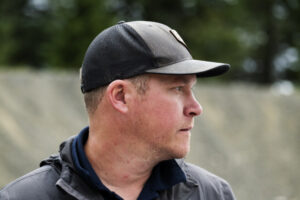
Matt Croswait, the Ops Section Chief for the Three Buttes Fire pointed at a current map on September 11, 18 days or so since the fire began. “On this steep slope, we have trees that have heat in the top, that could potentially fall over. So we’ve stopped the forward movement. But that doesn’t mean a tree can’t come across the line. So it’s contained, but it’s not controlled,” he said.
In the past few days, the command center for the fire is finally identifying areas as under control and they are hopeful they can have most of the fire contained by week’s end.
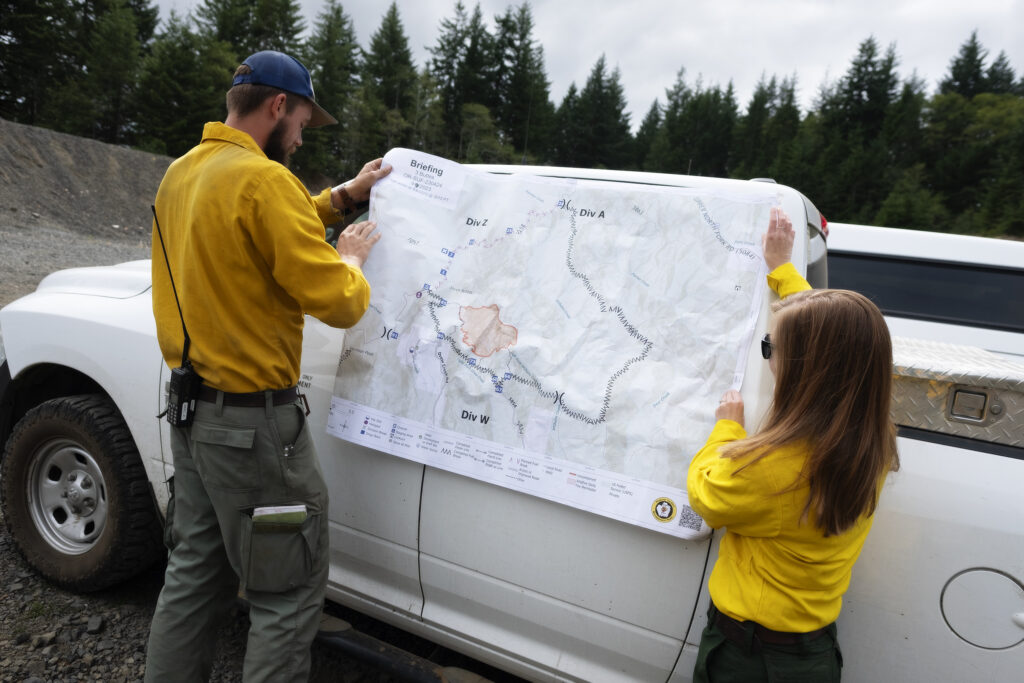
And out.
“So you contain it. You try your best to control it, and then hopefully good rains come in October,” Croswait said, describing the best-case scenario for the fire and what it will likely take to put this fire out.
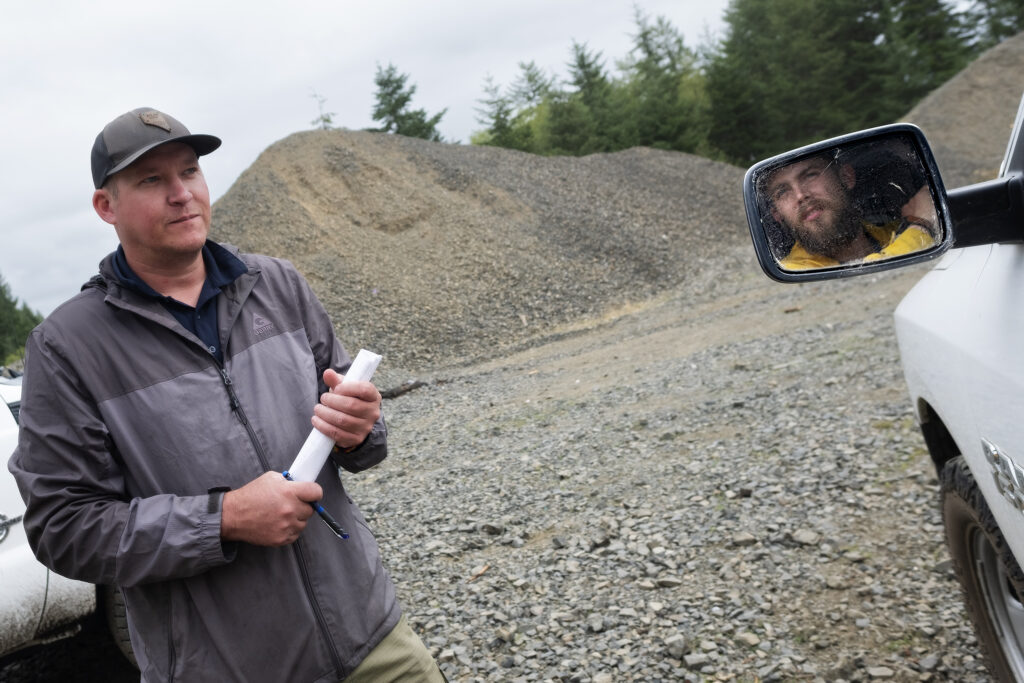
The low-tech way to see if a fire is out is called cold trailing. With one glove on, and the other off a firefighter checks the ground. The gloved hand pulls back the material and the bare hand digs into the dirt to feel if it is cool to the touch. “Your fingernails are just black for months,” public affairs officer Joanie Schmidgall said, describing the process.
The heat from a fire can stay trapped underground, or in the roots, even through winter. So a fire may not be called out until the following spring when it is checked for any remaining hot spots.
The Three Buttes Fire is not large by wildfire standards. It is roughly 144 acres. Large fires can and have burned hundreds of thousands of acres. But for this area, this is a big fire. The Siuslaw National Forest is a temperate rainforest blessed with plenty of rain that keeps the trees green and the ground moist. High relative humidity is also a safeguard against significant fires.
But a dryer than normal summer in 2023 put the area at risk. The rain from previous years created a lush undergrowth, thick with vegetation that provided the fuel for this fire. And beneath that is a thick layer of organic material called duff. Walk through the forest and feel the spring in your step. That is the duff – old pine needles, and other decomposing material that provides a rich supply of potential fuel to any fire in the Siuslaw National Forest.
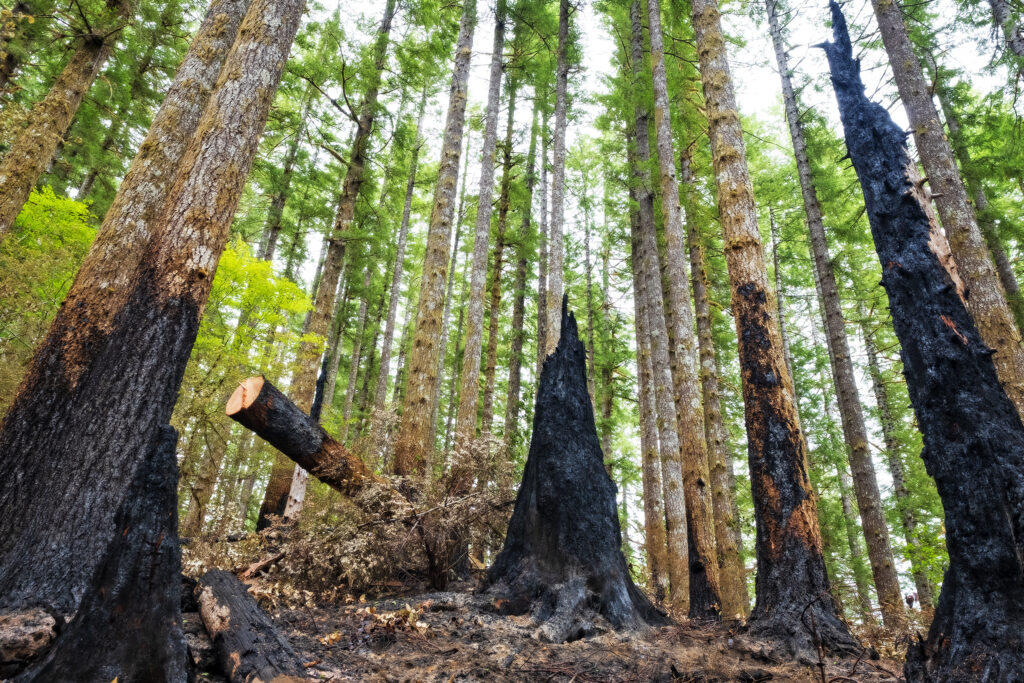
Working in a forest with thick underbrush presents its own set of challenges. Trails need to be cut through dense undergrowth just to get to the fire. Much of the first two weeks of fighting this fire was spent creating indirect lines of containment around the fire and creating the new trails. Because of that effort, firefighters can now work on the direct containment lines along the fire itself.
Clearing paths is slow difficult work and the vegetation is so thick you could potentially walk off a cliff because you can’t see the ground beneath you. “It’s challenging for a low-intensity fire with low spread potential because of the terrain and fuel type,” Croswait said.
It’s Croswait’s 20th season fighting fires and he loves it he said. He gets to play outside in the woods, travel, meet new people, do cool things, and not sit behind the computer.
Controlling the fire, safely, is job one. But he also feels responsible to the people who live in the area and use the forest. Roads are closed for obvious safety reasons, but that can limit access for hunters and others who use the forest. There is also an impact on the private landowners whose property abuts the fire.
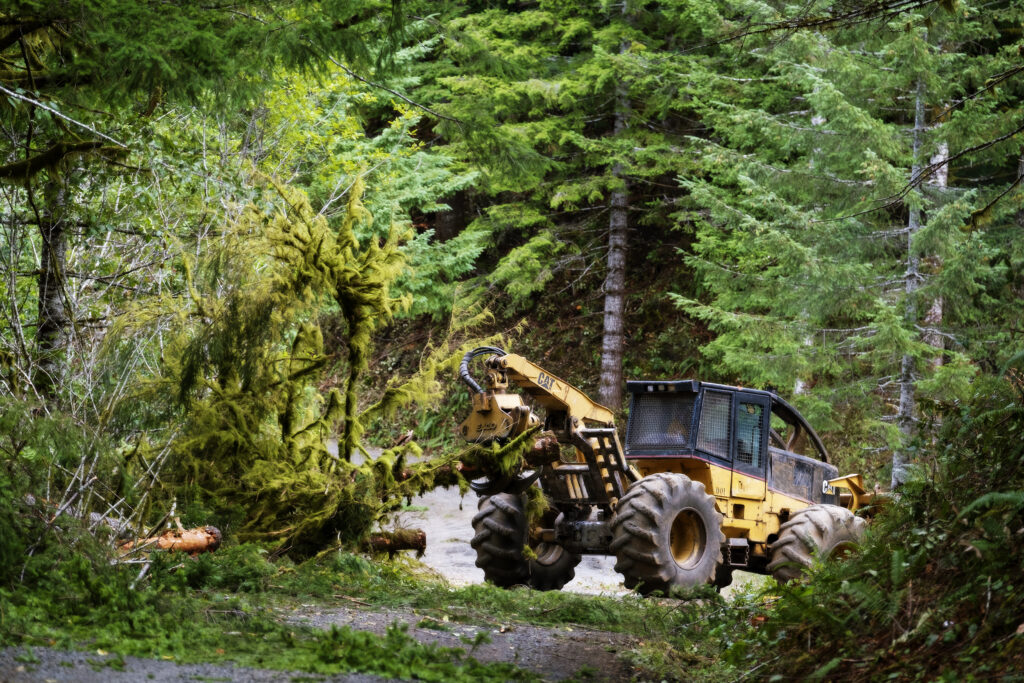
And there is the impact on wildlife. The forest is home to the marbled murrelet among other species.
Croswait has never seen a marbled murrelet. Not surprising since the seabird is a threatened species and famously shy and difficult to spot in the old growth forest where it breeds.
The bird lives its life on the ocean but flies inland to nest and lay its eggs. Though neither term is quite accurate.
The bird doesn’t build a nest, and it only lays a single egg each year, directly on a large branch of the old-growth Douglas firs in the area. Murrelets battle the elements fishing along the Oregon coast but always return to the forest to reproduce.
Croswait’s second-hand description is of a penguin-looking bird that swims better than it soars. He was told they fly directly at their intended tree before pulling straight up and then, flapping their wings hard, settle slowly onto their target, a large branch. Like the Space X rocket landing is how it was described to him.
It is a story of ingenuity and perseverance.
